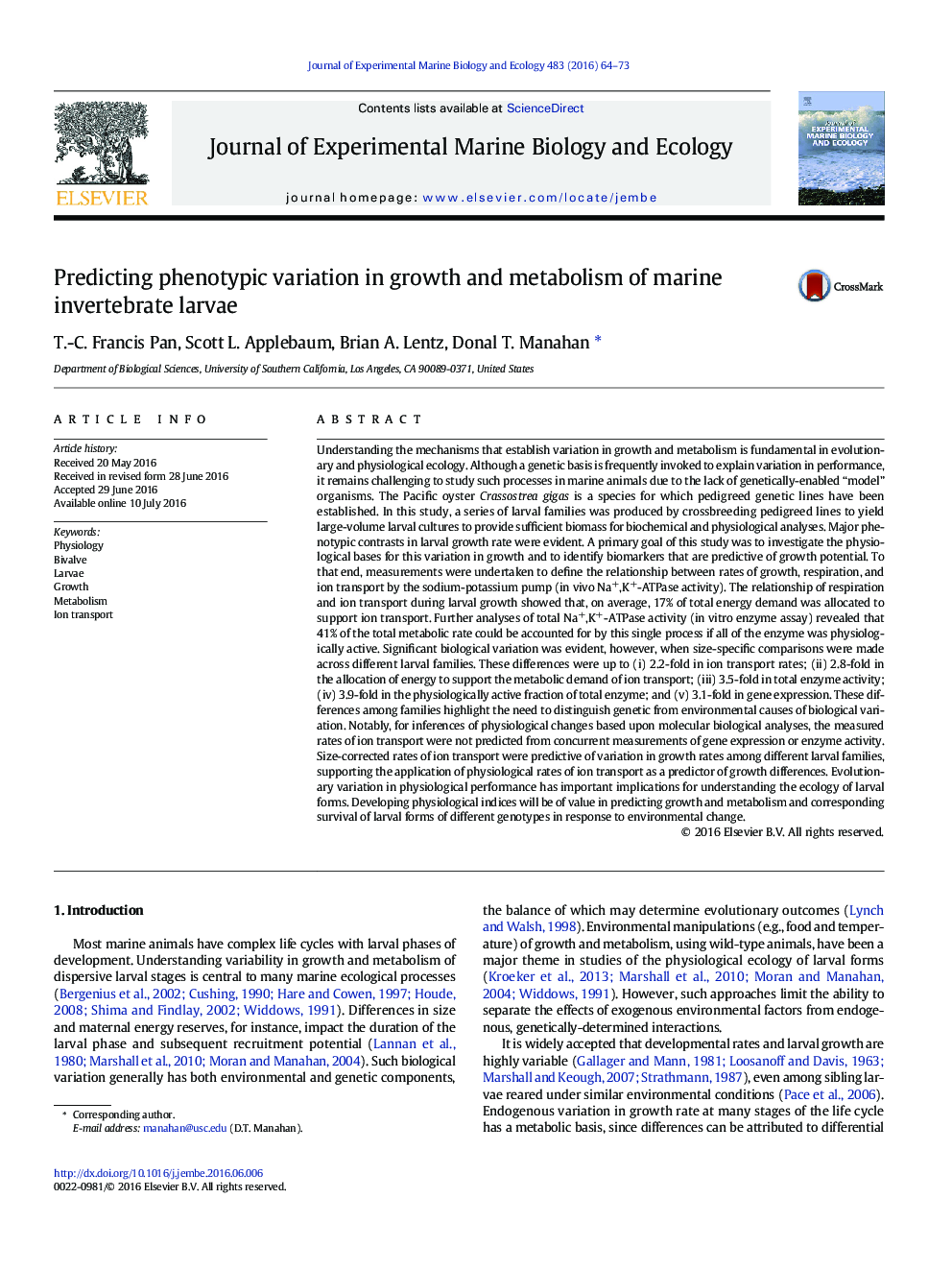| کد مقاله | کد نشریه | سال انتشار | مقاله انگلیسی | نسخه تمام متن |
|---|---|---|---|---|
| 4395218 | 1618392 | 2016 | 10 صفحه PDF | دانلود رایگان |
• Progeny of pedigreed lines showed significant variation in growth and metabolism.
• Sodium-potassium transport rate predicted variation in larval growth.
• Change in gene expression and enzyme activity did not predict ion transport rate.
Understanding the mechanisms that establish variation in growth and metabolism is fundamental in evolutionary and physiological ecology. Although a genetic basis is frequently invoked to explain variation in performance, it remains challenging to study such processes in marine animals due to the lack of genetically-enabled “model” organisms. The Pacific oyster Crassostrea gigas is a species for which pedigreed genetic lines have been established. In this study, a series of larval families was produced by crossbreeding pedigreed lines to yield large-volume larval cultures to provide sufficient biomass for biochemical and physiological analyses. Major phenotypic contrasts in larval growth rate were evident. A primary goal of this study was to investigate the physiological bases for this variation in growth and to identify biomarkers that are predictive of growth potential. To that end, measurements were undertaken to define the relationship between rates of growth, respiration, and ion transport by the sodium-potassium pump (in vivo Na+,K+-ATPase activity). The relationship of respiration and ion transport during larval growth showed that, on average, 17% of total energy demand was allocated to support ion transport. Further analyses of total Na+,K+-ATPase activity (in vitro enzyme assay) revealed that 41% of the total metabolic rate could be accounted for by this single process if all of the enzyme was physiologically active. Significant biological variation was evident, however, when size-specific comparisons were made across different larval families. These differences were up to (i) 2.2-fold in ion transport rates; (ii) 2.8-fold in the allocation of energy to support the metabolic demand of ion transport; (iii) 3.5-fold in total enzyme activity; (iv) 3.9-fold in the physiologically active fraction of total enzyme; and (v) 3.1-fold in gene expression. These differences among families highlight the need to distinguish genetic from environmental causes of biological variation. Notably, for inferences of physiological changes based upon molecular biological analyses, the measured rates of ion transport were not predicted from concurrent measurements of gene expression or enzyme activity. Size-corrected rates of ion transport were predictive of variation in growth rates among different larval families, supporting the application of physiological rates of ion transport as a predictor of growth differences. Evolutionary variation in physiological performance has important implications for understanding the ecology of larval forms. Developing physiological indices will be of value in predicting growth and metabolism and corresponding survival of larval forms of different genotypes in response to environmental change.
Journal: Journal of Experimental Marine Biology and Ecology - Volume 483, October 2016, Pages 64–73
